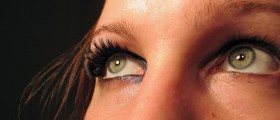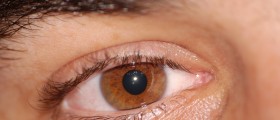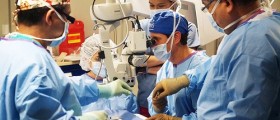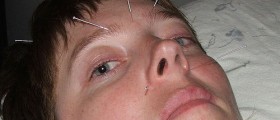
Weak Eye Muscle Surgery
Eye muscles are in charge with the eye movements. In case they do not function properly some of eye movements are not possible and it may significantly affect vision. The goal of the weak eye surgery is to restore all the movements of the eyes. It is performed to strengthen the affected muscles. In some cases apart from strengthening muscle, they require reposition to restore all physiological movements.
This type of surgery is applied in strabismus (crossed eyes), lazy eyes and so on.
Different Types of Eye Muscle Surgery
In majority of cases the surgeon will detach and then realign the affected eye muscle. This way the disorder can be fixed and the vision becomes much better.
Another surgical approach includes detachment of the affected muscle which is then cut and shortened and finally reattached in its original place. This type of surgery is done in case of significant weakness and is rather successful.
For people who are suffering from rigid eye muscles the surgeon has to weaken the muscles and allow the eyes to move in physiological directions. There are two surgical procedures done and they include reposition of the affected muscle further back on the eye and injection of botulinum toxin into the affected muscle. The last procedure was first introduced in 1980. It is quite successful since it stops the abnormal movements of the eye. The effect of toxin eventually wears off but repositioning of the muscle is usually permanent.
The best candidates for eye muscle surgery are those suffering from crossed and lazy eyes. Additionally, this type of surgery may help certain number of people suffering from nystagmus. In patients who have nystagmus this type of surgery can provide minimal movements of the eyes by aligning them in one particular position. Even patients with Duane syndrome may benefit from eye muscle surgery. They commonly suffer from limited horizontal eye movements and the problem can be improved by weakening of the muscles which restrict these movements.
Eye muscle surgery is an outpatient procedure. It is not radical since it does not require removal of the eyes from the sockets. Patients are due to report the surgeon all the medications they are taking. After the surgery patients may complain about itchiness but under no circumstance they can rub the eyes. This can only prolong the process of healing. Swelling and small amount of discharge are normal for this type of surgery.
Risks of Eye Muscle Surgery
The risk is minimal. In rather rare cases retinal or nerve damage may occur. Damage of these structures leads to blindness. Double vision after the surgery is corrected by lenses or vision therapy.

















Your thoughts on this
Loading...